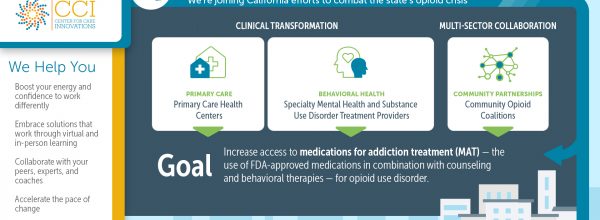In September 2016, we launched Treating Addiction in the Primary Care Safety Net (TAPC) in response to the growing opioid epidemic in America.
In partnership with the California Health Care Foundation, our TAPC program provided tailored technical assistance on implementing and sustaining medication-assisted treatment (MAT) services to address opioid addiction in 25 federally qualified community health centers in California.

Impact of TAPC
Most TAPC participants made considerable progress in expanding addiction treatment activities. These improvements included increasing the number of patients receiving medication and the number of prescribers.
An extensive list of strategies to increase capacity to treat opioid addiction in primary care were identified through interviews with TAPC faculty, coaches, and participants. Our lessons learned fall into five categories:
- Attitudes and education. Shifting perspectives about addiction, the provider’s role in treatment, and the use of MAT.
- Reach and adoption. Increasing the number of prescribers and the number of patients receiving treatment.
- Operational strategies. Developing new or surfacing existing models for program design and implementation.
- Problem solving and persistent challenges. Addressing barriers to success.
- Avenues of support. Facilitating design and implementation of a learning program.
To learn more, download the project summary:
Find this useful or interesting? We’re constantly sharing stuff like this. Sign up to receive our newsletter to stay in the loop.


